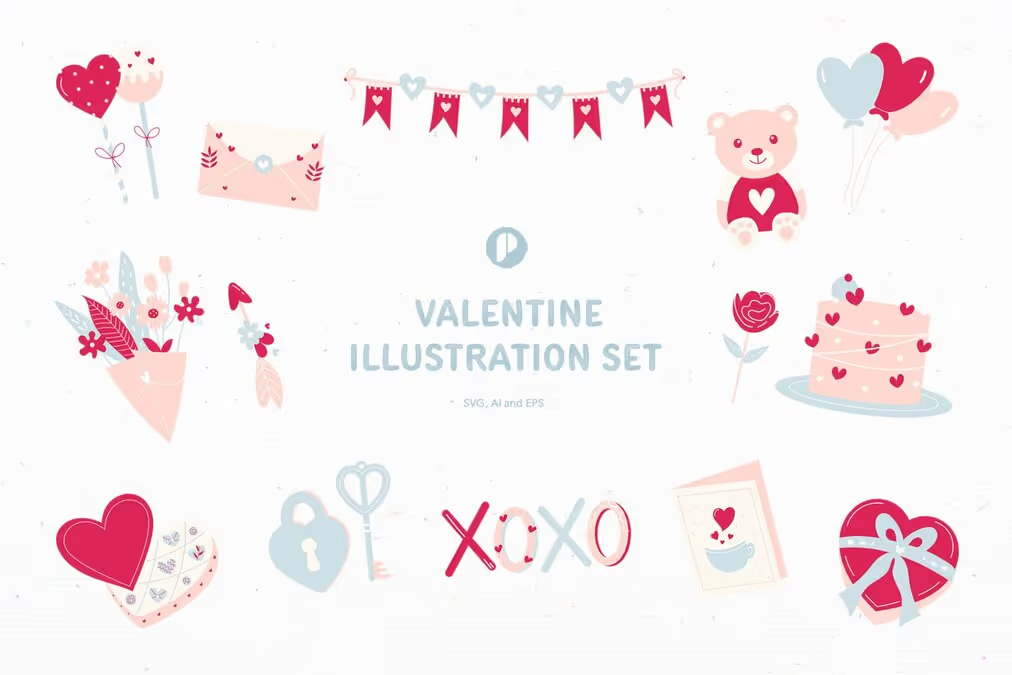How to Build a High-Converting Landing Page: Key Elements, Best Practices, and Step-by-Step Guide
Build a high-converting landing page that captures leads, boosts ROI, and engages visitors through proven design and optimization tips.

You can express your love to people around you any time, any day. However, for the most special one, Valentine’s Day is the perfect day to express or even confess your love. To set the right atmosphere and convey deep feelings, you must be able to choose items with the right color. You must be very familiar with the colors of Valentine’s Day, right? Yet, do you know why these colors are associated with a day dedicated to loved ones?
Up to this day, three colors are used on Valentine’s Day, red, pink, and white. Some even say those are the colors of love. Each of them represents different love types. Red for the burning love, pink for the understanding love, meanwhile white for the pure love. Why is that so? Let’s go back in time to learn a little bit story of how those colors are associated with love expression.
Many years before people knew Valentine’s Day, ancient Rome had a Lupercalia festival in mid-February (the 15th). The festival was to celebrate and encourage fertility. However, do not ever imagine that the celebrations are the same as today. It was completely different.
The festival started with animal sacrifice, usually goats. The blood from the sacrificed animal was smeared on the priest’s forehead, then wiped out with wool soaked in milk. Meanwhile, the women who participated in the festival were being touched by the sacrificed animal’s skin to increase their fertility. This festival and tradition were ended and banned by Pope Gelasius I at the end of the 5th century, who replaced and renamed the celebration with Valentine’s Day and moved it to February 14th.
From this brief history, did you notice what colors were on that day? That’s right, red and white. So, why is pink one of Valentine’s Day colors? We will find out the why when we know the meaning of the colors.
Colors can have different meanings and impressions depending on usage and occasions. Likewise with red, white, and pink. When those three colors are combined with other colors or used at other moments, they can have different meanings. Then, how about when the colors are used on Valentine’s Day?
In color psychology, red represents the strongest feeling compared to other colors. It shows domination, aggression, excitement, and energy, yet it is the natural color of danger and warning. Despite all those qualities, red also is a color for passion and desire. Its connection to love expression can be related to various festivals, traditions, and events in ancient times.

Lupercalia is a clear example of the red color used to symbolize fertility (the relation between man and woman). Later on, we are familiar with the story of Saint Valentine, who sacrificed himself for love (blood is involved in this event, too), with various versions. Not to mention the cultures in many countries, especially in the Asian region, which encourage the bride to wear red at weddings. It represents prosperity, love, and fertility. However, the simplest reason red is one of Valentine’s Day colors is because it is the color of blood and the heart.
If red represents passion and strong feelings, white has the opposite color of psychology. White often associates with purity, innocence, cleanness, simplicity, and minimalism. It is also connected to blankness, coldness, and emptiness. In contrast to Asian culture, Western culture makes white the color on the wedding day to show the purity and virginity of the bride.

White becomes one of the Valentine’s Day colors that may come from this storied background. Historical background to support this reason also can be found in the Lupercalia festival. Although white was not as dominant as red, we found the use of the white element in the festival in the procession of wiping the blood using a wool cloth soaked in milk. A mythological love story of Aphrodite and Adonis that involved a white rose.
No Valentine’s Day without pink shade. Although this color does not have deep historical origins like red and white, there is a certain reason why this color has become very synonymous with Valentine’s Day. Pink is a combination of red and white, the passionate and pure love creates an innocent love, like a young love. It often associates with feminine qualities, such as softness, kindness, warmth, and compassion.

Compared to red and white which seem more mature, pink indicates a newly blossoming love. When you are in the early stage of a relationship, giving gifts in pink on Valentine’s day is the best choice. It is less aggressive but shows the adoration you have for your loved one. This color is also very suitable to convey familial and friendly love.
Understanding the meaning of Valentine’s Day colors will make it easier for you to give gifts to loved ones. It doesn’t have to be expensive. Handmade ones can be the most valuable gifts even if it’s just a simple design. A Valentine’s Day card can be your starting point. You can give it to people you cherish, not only your other half.

Want to make something even more memorable? You can make slides or short videos that are suitable for a love confession. Custom the design by inserting various moments to make it more meaningful. Add illustrations with a related theme to bring Valentine’s atmosphere to the design work. Or make a photo collage that can be posted on social media or printed to display on the wall or table in your house.

Colors can convey different messages, especially when you convey your love. However, you don’t have to stick to one color when designing for Valentine’s Day. Combining colors will produce a more attractive appearance. Apart from that, you can also use other than the three Valentine’s Day colors above to deliver more messages and creates better work.